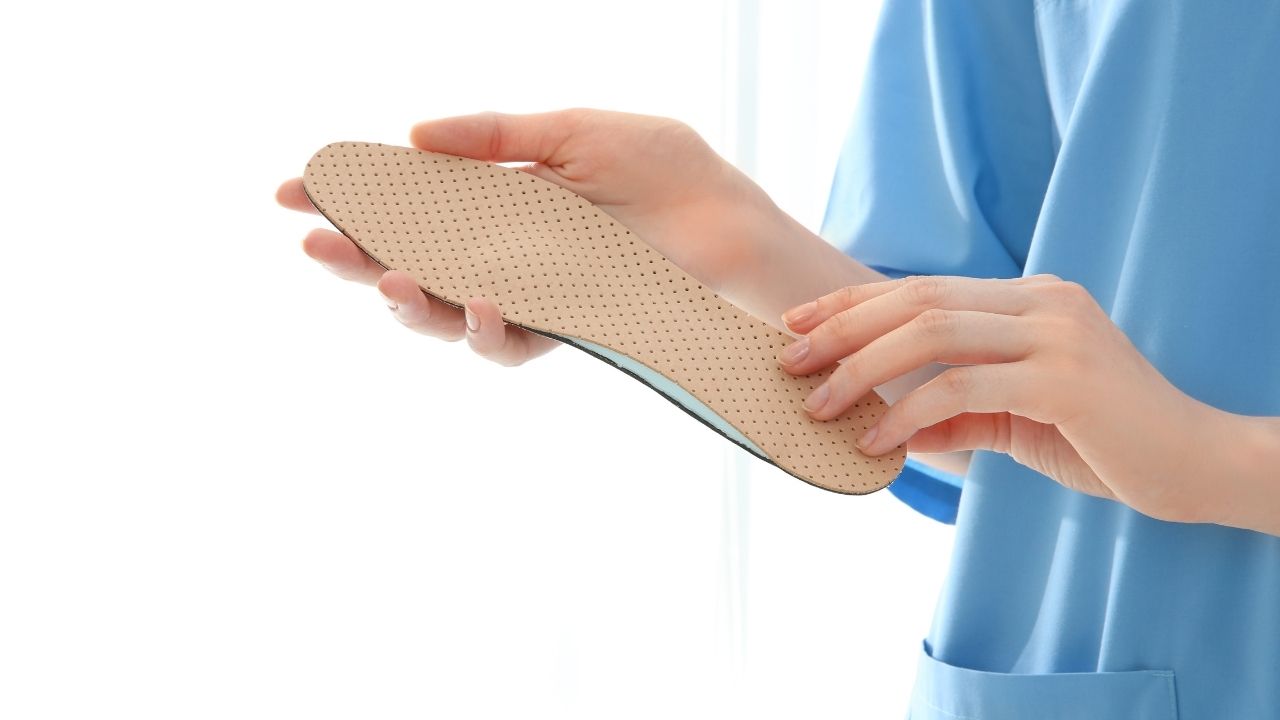Health
Benefits Of Custom Orthotics

Our feet happen to be some of the more complex parts of our body. After all, each foot has 26 different bones and all kinds of muscles, ligaments, and tendons. Your feet are crucial to your body because they support it. Your feet are the foundation of your body. They must support not only your body weight but also your balance. Because of this, having any foot problem can result in problems with the rest of the joints, muscles, and ligaments throughout your body. Visit the Orthotic Shop for a range of orthotic footwear. This is why a lot of people seek out custom orthotics. Custom orthotics are prescription devices that are used to correct foot problems. They are meant to fix a lot of biomechanical issues that can result when doing activities requiring movement. Having foot problems can cause issues with you whether you are standing, walking, or running. Having orthotics that are custom-made for your feet can help to reduce any pain you’re dealing with that is directly caused by your foot issues.
To get custom orthotics, your health practitioner is going to look at your overall history. They will also look at the things that could affect your feet including your weight, your height, and the types of activity you do regularly. This includes any medical conditions you might have. From there, your health practitioner is going to determine whether or not you are a candidate for getting customized orthotics. They will also use all of this information to figure out what materials the orthotics should be made of. Once they’ve determined all of this, they will take a 3D mold of your feet. That way, they will have the exact specifications of your feet which they can create a custom orthotic to match. This will help them design something that addresses your specific needs as far as your biomechanics are concerned.
A lot of the time, you’ll find medical practitioners offering up these types of orthotics if you are dealing with problems that can be directly caused by poor alignment. Whether it’s fatigue, muscle soreness, ligament problems, or foot pain, orthotics can help. Here, you will find some of the benefits of getting custom orthotics for both your overall health and your foot health.
1. Proper Support For Your Feet
One of the main benefits you will be able to get by getting custom orthotics is proper support for your feet. They will design shoe inserts that will help to provide you better overall support. This is especially true for the arches of your feet. That way, you gain more stability when you are either standing or walking. While you can find the same benefits from over-the-counter (OTC) alternatives, you aren’t going to get the same level of precision as with custom orthotics. After all, they are designed with a standard foot in mind. Thus, they aren’t going to be tailored to match the exact specifications of your feet. This means you won’t be able to get problem areas dealt with nor will you be able to correct any foot abnormalities you might have. For instance, if you have flat feet or high arches you won’t get the same precision offered through OTC options.
2. Protecting Your Joints
The force that is applied to all of the joints of your feet and your entire body is going to be the equivalent of your weight multiplied by several times. Because of this, you will find that your body takes a beating. This can cause a lot of issues if you have foot trouble. This is especially true if you are carrying more bodyweight than your frame is built for. Also, if you are someone who routinely walks on hard surfaces, you’ll find it gets even worse. For those who have flat feet, you will suffer from similar issues. That being said, custom orthotics, can help your feet properly support the entire weight of your body while standing still and doing movement activities. This will enable your feet to have the weight distributed much more evenly. This can keep you from having to absorb the impact with a specific area of your feet. That way, you can stay active much longer throughout the day without experiencing the normal wear and tear that would come with it. It can also be a good fix if you have two different feet from one another. That way, you can balance your feet out to ensure you aren’t dealing with complex alignment-related issues.
3. Pain Reduction
You are going to end up experiencing lessened pain because the orthotics will help to provide your foot with more cushion. This can be especially true if you suffer from problems that are known to cause painful issues that can affect more than one area of the body. For instance, if you suffer from arthritis, flat feet, or even plantar fasciitis, custom orthotics can bring a lot of pain relief. When you suffer from these issues, you’ll place a lot of strain on the ankles and other joints in your body. You will even place more pressure on your lower back. Because of this, you’ll quickly find these things wearing down quicker than normal. This is to compensate for the biomechanical problems they cause. For those that suffer from diabetes, custom orthotics can help to keep you from developing foot ulcers.
4. Better Athletic Performance
You’ll find a lot of athletes invest in custom orthotics. The reason is due to the wear and tear your body goes through. If an athlete has an imbalance, they are going to suffer more than someone who doesn’t do a lot of high-impact exercises. Custom orthotics are not only going to reduce the risk of injury, but they can make it much easier to perform precise movements. They will also help to improve balance because the weight of your body will be distributed evenly. It can even help to reduce any muscle fatigue you experience because your muscles won’t have to work overtime.
5. Injury Prevention
As mentioned, you will be able to reduce your risk of injury with custom orthotics. They can prevent a lot of injuries because they are going to help balance out your body. When you suffer from any kind of imbalance no matter the reason, you are at a heightened risk for suffering an injury. Research has shown that custom orthotics can reduce the risk of sustaining an injury by 28 percent. Likewise, they can reduce the risk of sustaining a stress fracture by as much as 41 percent.
6. Improve Your Quality Of Life
By making significant improvements in your balance and the alignment of your feet, you can reduce the unnecessary stress placed on other important areas of your body. This can improve your overall health and allow you to live a pain-free life. A lot of people might have difficulties sleeping or remaining active because of foot trouble. Custom orthotics can remedy a lot of these issues which can help you enjoy a higher quality of life.
Health
Snack Smarter: The Rise of Low-Calorie Almond Butter for Active Lifestyles

The snack aisle is shifting. For those who balance a busy life with a commitment to health and fitness, the rise of low-calorie almond butter offers a new way to snack smarter. American Dream Nut Butter is at the center of this change, blending clean ingredients with dessert-inspired flavors and added protein to create almond butter that is both nutritious and enjoyable.
Why Almond Nut Butter Is Key to Clean Eating
As consumers become more mindful of their food choices, the spotlight is increasingly on nutrient-dense snacks that provide sustained energy without excess calories. Almond butter, especially in low-calorie varieties, meets this demand by offering a rich source of healthy fats, fiber, and protein in a compact form. Compared to traditional spreads, such as peanut butter, almond butter often provides a smoother, lighter alternative with a different nutritional profile.
For those who track macros or embrace meal prepping, almond nut butter fits neatly into their plans. Its balance of fats and protein supports satiety, helping to keep hunger at bay between meals or during workouts. American Dream Nut Butter elevates this concept with high-protein options that blend the wholesome qualities of almonds with a subtle sweetness inspired by classic desserts.
How Much Protein is in Low Calorie Almond Butter for High Performance?
One common question around almond butter is: how much protein does almond butter contain? While natural almond butter provides a moderate protein boost, American Dream Nut Butter takes it a step further by creating blends that enhance protein content without relying on artificial sweeteners or fillers. This approach suits those seeking fuel for recovery or sustained energy throughout their day.
These protein-enhanced almond butters can work as a pre-workout snack, a post-exercise treat, or simply as a midday pick-me-up that aligns with a health-conscious lifestyle. The brand’s small-batch production method ensures each jar maintains a fresh, creamy texture that spreads easily or drizzles beautifully over everything from oatmeal to fruit.
Buy Almond Butter: Unique Flavors from American Dream

American Dream Nut Butter distinguishes itself with unique flavor profiles, such as Cinnamon Toasties and Cookie Batter. These offerings embrace the idea that healthful snacks can still delight the palate, using clean, natural ingredients to create indulgent taste experiences without sugar bombs or artificial additives. Each batch is hand-whipped in-house, reflecting the brand’s commitment to quality and care.
Their dedication to natural flavors and nutrient density allows consumers to enjoy a dessert-inspired snack while keeping their wellness goals intact. Whether you’re looking to buy almond butter that tastes like a treat or are curious where you can find almond butter crafted with both nutrition and flavor in mind, American Dream Nut Butter offers an accessible option.
Almond Nut Butter: Fuel for Athletes and Busy Parents
Almond butter’s versatility makes it appealing for a wide range of active lifestyles. For athletes, it provides a balanced blend of nutrients that supports energy and recovery without unwanted additives. For busy parents or professionals juggling multiple demands, it’s a convenient, clean snack that fits into hectic schedules without compromise.
The brand’s YouTube channel offers video insight into how these nut butters are crafted, revealing the hands-on process that ensures quality in every jar. By choosing American Dream Nut Butter, consumers support a product that embodies family values and a personal story of overcoming dietary challenges to create wholesome alternatives that everyone can enjoy.
Where Can You Find the Best Almond Butter & More? The Future Is Here
The growing interest in low-calorie nut butter reflects a broader shift in how people approach snacking—valuing nutrition, flavor, and mindful eating in equal measure. American Dream Nut Butter’s approach, which combines protein-rich formulas with all-natural ingredients and enticing flavors, shows how almond butter, peanut butter, and cashew butter can evolve from a niche health food into a daily staple for those who want to snack smarter.
For more on the evolving nut butter market and how it aligns with fitness trends, check out this feature on the rise of healthy high-protein nut butter. To explore American Dream Nut Butter’s full collection and shop their almond butter selections, visit their website.
American Dream Nut Butter invites you to experience healthy nut butters that strikes a balance between enjoyment and mindful nutrition—perfect fuel for active days and wellness routines alike.
*Images sourced from American Dream Nut Butter
-

 Tech4 years ago
Tech4 years agoEffuel Reviews (2021) – Effuel ECO OBD2 Saves Fuel, and Reduce Gas Cost? Effuel Customer Reviews
-

 Tech6 years ago
Tech6 years agoBosch Power Tools India Launches ‘Cordless Matlab Bosch’ Campaign to Demonstrate the Power of Cordless
-

 Lifestyle6 years ago
Lifestyle6 years agoCatholic Cases App brings Church’s Moral Teachings to Androids and iPhones
-

 Lifestyle4 years ago
Lifestyle4 years agoEast Side Hype x Billionaire Boys Club. Hottest New Streetwear Releases in Utah.
-

 Tech7 years ago
Tech7 years agoCloud Buyers & Investors to Profit in the Future
-

 Lifestyle5 years ago
Lifestyle5 years agoThe Midas of Cosmetic Dermatology: Dr. Simon Ourian
-

 Health6 years ago
Health6 years agoCBDistillery Review: Is it a scam?
-

 Entertainment6 years ago
Entertainment6 years agoAvengers Endgame now Available on 123Movies for Download & Streaming for Free
